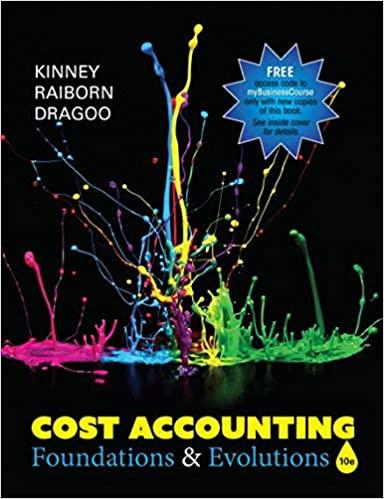


It requires you to complete a problem relating to the accounting for accounts and notes receivable. - Problem - Accounts Receivable Campbell Co. makes most of its sales on a credit basis. Campbell uses the allowance method to account for credit losses. The company adjusts its accounts just once a year, at the December 31 year-end. Consider the following balances available from the company's unadjusted trial balance at year-end 2020: Credit Account Accounts receivable Allowance for doubtful accounts Debit 5,294,360 81,705 Campbell prepared an aging of accounts at year-end 2020, as follows: Age Group Amount 0-30 days 31-60 days 61-90 days 91-120 days Over 120 days $2,586,140 1,192,370 763,810 414,060 337,980 $5,294,360 Estimated % Uncollectible 1.3% 9.1% 17.8% 29.2% 46.9% On March 11, 2021, Campbell wrote off a sizable receivable balance, amounting to $31,055. Later, on October 26, 2021, Campbell received a check from this customer for $12,780 as partial payment on the past-due account. Notes Receivable On December 31, 2021, Campbell received a 4-year, 4%, $63,815 promissory note as consideration in an inventory sale transaction on that date. The note requires the customer to pay interest annually on December 31 (2022 through 2025). The going market rate of interest for comparable notes on the issue date was 8%. Applying GAAP, Campbell uses the effective-interest method to amortize premiums and discounts on all of its promissory notes. Receivables - Data Analytics Below, you are provided information on the receivables and related allowance for credit losses for three members of the S&P 100. The information is provided for the years 2020, 2019 and 2018. All amounts are stated in millions of dollars. Amazon.com, Inc. 2018 Gross receivables, 12/31 $13,805 Allowance for credit losses, 1/1 348 Write-offs 731 Bad debt expense 878 Other adjustments 0 Allowance for credit losses, 12/31 495 2019 $20,699 495 793 1,000 16 718 2020 $18,763 718 1,000 1,400 -18 1,100 Comcast Corporation 2018 Gross receivables, 12/31 $11,456 Allowance for credit losses, 1/1 288 Write-offs 552 Bad debt expense 616 Other adjustments 0 Allowance for credit losses, 12/31 352 2019 $11,711 352 702 769 0 419 2020 $12,273 419 524 912 0 807 T-Mobile US, Inc. 2018 Gross receivables, 12/31 $6,040 Allowance for credit losses, 1/1 482 Write-offs 328 Bad debt expense 297 Other adjustments 65 Allowance for credit losses, 12/31 516 2019 $6,232 516 332 307 -31 460 2020 $10,336 460 380 602 117 799 - Instructions - Using the information provided above, address each of the following matters related to receivables: (a) Accounts receivable: (1) Give the adjusting entry Campbell must make for estimated credit losses at December 31, 2020. (b) (2) (2) Give the entries Campbell must make to record the 2021 events related to its accounts receivable: The write-off on March 11, 2021. The partial collection after write-off on October 26, 2021. Notes receivable: (1) Give the entry Campbell must make to record the receipt of the 4-year promissory note on December 31, 2021. Give the interest and collection entries Campbell must make over the remaining term of the 4-year note (through December 31, 2025). Tip - You might find it helpful to start by preparing an amortization schedule. (c) Receivables - data analytics: (1) Compute the 12/31 Allowance for credit losses as a percentage of the 12/31 Gross receivables for each company and year. Prepare a clustered column chart to show the yearly percentage for each company. Which two companies show a decreasing percentage in 2019 and an increasing percentage in 2020? (2) Compute the 1/1 Allowance for credit losses as a percentage of the Write- offs for each company and year. Prepare a clustered column chart to show the yearly percentage for each company. Which company shows a decreasing percentage in 2019 and in increasing percentage in 2020? (3) Compute the cumulative Bad debt expense for 2018 to 2020 as a percentage of the cumulative Write-offs for 2018 to 2020. Prepare a clustered column chart to show the percentage for each company. Which company appears to have forecast write-offs the most accurately over this three-year period? Explain in one sentence. Please observe the following checklist of instructions as you complete this assignment: Prepare your journal entries and supporting calculations using Excel. Give careful attention to your formatting of information. Formatting includes effective presentation of information, correct spelling and capitalization, and proper use of dollar signs, commas, and underscoring. Round all dollar amounts you present in your journal entries to the nearest dollar









